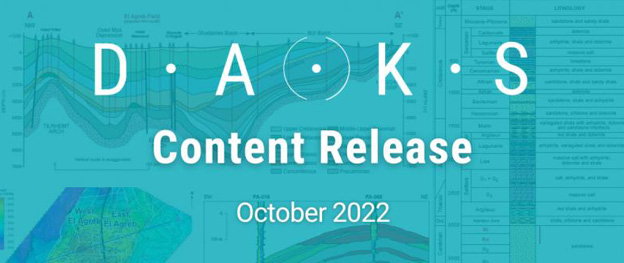
C&C Reservoirs has just released 76 new and rewritten Reservoir Evaluation Reports which are now available in DAKS.
This includes 17 from North America, 16 from Asia-Pacific, 16 from Europe, 11 from Africa, 8 from Latin America, 6 from Russia and the Caspian Sea, and 2 from the Middle East.
Highlights include:
Cranfield (USA) - Onstream since 1943, the Upper Cretaceous, Lower Tuscaloosa fluvio-deltaic sandstone has been produced through aquifer and gas-cap drive, aided initially by gas recycling and more recently by CO2 miscible flood, reaching a >50% recovery factor.
Kaji-Semoga Telisa Sandstone (Indonesia) – This tight Lower-Middle Miocene shoreface sandstone reservoir in a dominantly reef carbonate field, began light oil production in 2002 when hydraulic fracturing was tested successfully, while water injection is believed to be able to increase ultimate recovery factor from 9% to 13.4%.
Piltun-Astokh (Russia) – This field located offshore Shakkhalin Island began producing light oil in 1999 from multiple stacked shoreface-shelf sandstones of Upper Miocene age, driven by gas cap, moderate aquifer and solution gas, aided initially by gas recycling and subsequently water injection since 2004, in both conventional and extended-reach wells.
Yarigui-Cantagallo (Columbia) – Onstream since 1942, heavy oil (14-21 °API) is mainly produced from the Eocene, very heterogeneous La Paz meandering-fluvial sandstone through gas-cap expansion and aquifer drive, aided by pumping. Waterflood and infill drilling helped revitalize the field and rejuvenate production.
Zotti, El Gassi & El Agreb Fields – Three fields added in Oued Mya-Ghadames Basin, Algeria which contain oil trapped in intensely faulted and fractured Upper Cambrian Ri-Ra Sandstones within inversion anticlines. The layered sandstones were deposited in braided fluvial to shallow marine environments with porosities of 7.5-9% and permeabilities of 7.5-26 mD. Heterogeneous permeability distribution affected well performance with preferential water flow through high permeability streaks. Production from El Gassi and El Agreb began in 1960 from their discovery wells, with Zotti in 1963, supported by aquifer and solution-gas drives. Production was improved mainly by hydraulic fracturing and infill drilling, with closure of high water-cut wells to control aquifer water influx. Water injection began at El Agreb in 1996 with miscible gas injection in El Gassi in 2004.
Click Here to see the full list of Reservoir Evaluation Reports included in this release.
KeyFacts Energy Industry Directory: C&C Reservoirs
 KEYFACT Energy
KEYFACT Energy